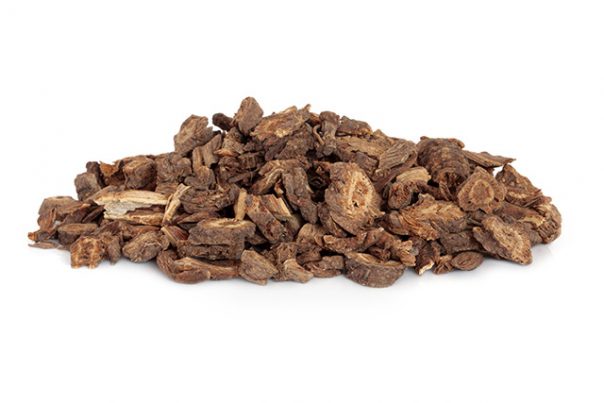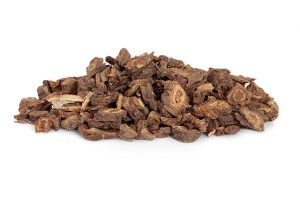- Herbs.news
- Fresh.news
Notopterygium – sources, health benefits, nutrients, uses and constituents at NaturalPedia.com
Saturday, September 02, 2017 by Earl Garcia
http://www.naturalpedia.com/notopterygium-sources-health-benefits-nutrients-uses-and-constituents-at-naturalpedia-com.html

Notopterygium is a perennial herb that is native to East Asia. The herb belongs to the same family as the angelica plant. According to an Acupuncture Today article, the roots and the rhizome of notopterygium are used in herbal medicine. The rhizomes are either cylindrical or irregular in shape, and are dark brown or reddish brown in color. The plant goes well with other medicinal herbs and spices such as garlic, cinnamon, schizonepeta and cnidium.
List of known nutrients
Notopterygium contains a vast number of components that are essential for body function. Separate entries posted on Herbpathy.com and the Chinese Herbs Healing website list the constituents found in the plant. These include:
- Alpha Copaene
- Apiol
- Aspartic Acid
- Benzyl Benzoate
- Bergaptol
- Bornyl Acetate
- Cnidilin
- Columbiananine
- Glucosides
- Glutamic Acid
- Guaiol
- Imperatorin
- Isoimperatorin
- Isoleucine
- L Arginine
- Leucine
- Limonene
- Lysine
- Marmesin
- Methionine
- Nodakenetin
- Notopterol
- Notopterol
- Phenylalanine
- Polyphenols
- Terpineol
- Threonine
- Valine
Medicinal uses for notopterygium
Notopterygium is traditionally used in Chinese herbal medicine to relieve diseases associated with the urinary bladder and kidney meridians. The plant contains pungent, bitter, and warm properties that help disperse cold and address painful obstructions caused by dampness. Practitioners of western folk medicine often use the plant to treat colds, fevers, and headaches.
The herb is also touted for its beneficial effects on the bones and the joints. The roots are commonly used to alleviate joint pain and stiff joints. Notopterygium is touted for its strong antipyretic properties that induce sweating. This makes the plant an ideal remedy against upper body pain and other spinal disorders.
Likewise, the medicinal herb is notably effective in addressing wind-damp in the head, neck, and back. An article posted on the MD Idea website also noted that combining the herb with angelica or chaste fruit may alleviate chronic pain in the limbs, knees, and shin.
The plant is also shown to improve the body’s cardiovascular health. Soluble portions of notopterygium roots are found to contain anti-arrhythmic properties. Likewise, volatile oils extracted from the roots possess strong anti-inflammatory, analgesic and antipyretic effects that help boost myocardial nutritional blood flow and reduce the risk of pituitrin-induced myocardial ischemia.
In addition, the powerful analgesic and antipyretic effects found in notopterygium are shown to stave off fungal infections and brucellosis. Volatile oils obtained from the plant are also known to reduce the odds of hypersensitivity. This makes the plant remarkably effective in relieving eczema caused by allergic reaction.
However, health experts cautioned that internal overdoses of notopterygium root may result in nausea and vomiting. The herb should also be avoided by patients who suffer from blood deficiency.
Body systems supported by notopterygium
Notopterygium is best known to alleviate pain in various parts of the body including the back, knees and the upper extremities. The plant is also shown to greatly benefit the heart and boost the body’s overall immunity against infections. Likewise, the herb helps maintain a healthy skin.
Ways to use notopterygium
The roots and rhizomes are traditionally used in herbal medicine. The parts are collected during the winter and spring, and are then cleaned by removing any fibrous rootlets. They are then allowed to dry naturally and cut into pieces for medicinal use. Asian markets, herbal shops and specialty stores are common retailers of dried notopterygium roots. The plant’s roots and rhizomes are also processed into pills and powder, which can be found in nutrition shops and stores.
Where to learn more
Summary
Notopterygium alleviates chronic pain in various parts of the body.
Notopterygium prevents the onset of myocardial ischema and hypersensitivity.
Notopterygium keeps both fungal and bacterial infections at bay.
Notopterygium supports the lumbar area, the knees and limbs and the upper extremities.
Notopterygium promotes the body’s cardiovascular health.
Notopterygium boost the body’s immunity and maintain skin condition.
Sources include:
Tagged Under: Tags: Notopterygium







